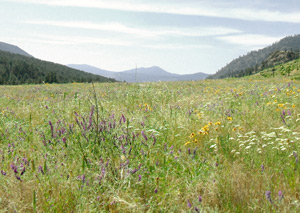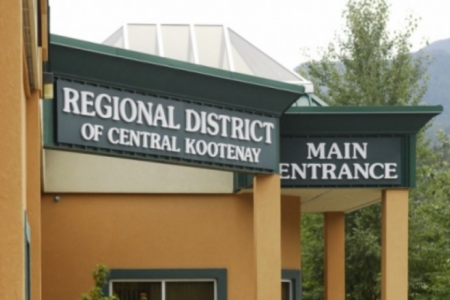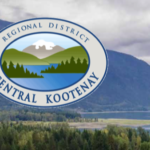Cattle vs. conservationists: the battle for the Gilpin
In a conflict that dates back to the 1970’s, the battle over the Gilpin Grasslands near Grand Forks between cattlemen and conservationists is still unresolved. Grand Forks City Council has found themselves the go to point for both sides of the controversy to try and garner government support for their cause. This round had council once again redirecting the conflict back into the hands of the province. The grandfathered rights for ranchers to use the Gilpin range have angered conservationists for years and, even with the announcement in April about the expansion of the class A Gilpin Grasslands Provincial Park by 124 hectares, conservationists continue to worry about the integrity of this sensitive environmental area. In an attempt to resolve the conflict between interests, an extensive community process in 2008 resulted in a proposal to the provincial government to create a wildlife management area in the Gilpin range. This proposal was never put into place. Both sides, cattlemen and conservationists, said at the city council meeting on May 31 that they are willing to stand behind the proposal that City Councillor Chris Moslin said has been shelved. “It’s stuck. Because the provincial government is ignoring that recommendation and the Ministry of Environment hasn’t the nerve or the resources to move it forward. That’s the problem, that’s where we’re stuck. All this council can do it try to get it un-stuck,” said Moslin. Conservationists focus on the damage from cattle ranging in the area, particularly in riparian areas near creeks. Ranchers and Ministry of Forests and Range staff argue back that they have done extensive mitigation to address the environmental concerns, and that, in fact, ranging cattle is not a major problem. Doug Fossen, a rancher in the West Boundary area with over 34 years of ranching history and a member of both the Kettle Valley Stockmen’s Association and B.C. Cattlemen’s Association, said that cattlemen understand the requirements of multi-use land and take pride in good management. “Like the tenure holders in Grand Forks we are continually bombarded with advice and criticism from people who don’t understand the concept of multiple use land. Our whole economy is based on getting along with our neighbours and working together and there is sometimes no pleasing some people. All the research has been done on this Grand Forks range unit and ranchers are quite willing to work on legitimate environmental concerns at our own cost and after thirty years of criticism it is time to leave this well-managed range unit alone,” said Fossen. The issue was brought again to council this spring when Barry Brandow, local guide/outfitter and conservationist, addressed the potential for e-coli in the Grand Forks watershed. The city maintains water rights to Overton Creek just east of the city that is currently not used as a water supply source. Brandow warned council that cattle ranging near this water source present a potential for contamination of the watershed. Al Grant of the Boundary Environmental Alliance also provided council with evidence of elevated e-coli counts from water testing of creeks in range areas. Council then requested presentations from the Ministry of Environment, which chose not to participate, the Ministry of Forests and Range and representatives of the cattle ranchers who came to the council meeting. E-coli in watersheds Werner Beliko, from the Ministry of Forests and Range, provided the council with information on the mitigation done in 2009 around the Gilpin range that included extensive fencing, development of water troughs for cattle near riparian areas, and the revitalization of Lost Lake by the Mehmal ranch. Doug Fraser, riparian and range issues expert with the Ministry of Forests and Range addressed the e-coli question. “It’s not feasible to fence all warm-blooded creatures out of all river systems. Every warm-blooded animal and bird carries e-coli,” said Fraser. “And not all e-coli is the harmful type that caused the problem in Walkerton – that was a very specific strain. What we’ve seen in very many jurisdictions where livestock is excluded is that we end up with a build up of wildlife populations and often the e-coli numbers are actually higher when the cattle have been removed because these become sanctuaries and wildlife numbers build up.” Fraser said that with over 30 million hectares of grazing area in B.C it just isn’t feasible or necessary to fence off riparian areas. “One thing we can do is manage for healthy plant communities and we can manage for healthy function. If we maintain those plant communities and healthy soils those are the filters that take out the pathogens and the sediment that are typically the concern.” Land management possible without public pressure Fossen, however, believes that, while the work done by the Mehmals to address environmental issues is a positive step, the range could have been managed without the additional cost but that pressure from the misinformed public forced the unnecessary expense. Fossen said his lands are managed without fencing using troughs to draw cattle away from rivers and streams. “When you look at the amount of grass on the outside of the fences and the inside, I personally would question the (need for mitigation.) I love to see it, if there’s money available and people can do that, but there’s a lot of pressure on us as ranchers to do things that make the public happy and the research is behind the fact that it’s not all that necessary. In areas that are high impact, yes, there should be fencing or exclusion but you can’t say you must fence all the creeks,” said Fossen. Fossen believes that each range area must be examined individually in order to make appropriate decisions about the environmental conditions. Brandow is not convinced that self-management is the answer. “Obviously this presentation to my thinking has absolutely no connection to reality whatsoever. The site and time specific field trip tells a mighty different story than what you heard from these cattlemen and the Ministry of Forests and Range.” Issue belongs at the provincial table Brandow agreed with Moslin that it is time for this issue to be addressed in a different forum. He wants the issue, which he maintains is bigger than just the ranching and includes the health of the entire watershed, to move into a provincial forum. He is disappointed that recently elected Liberal MLA for the Boundary – Similkameen John Slater has not taken up the challenge to resolve the problems in the area. He believes that range management has become the major issue in sensitive environments. Brandow went on to say that the issue is as much about aesthetics as health. “I think clearly the big issue is that we should find another forum to carry on this debate to get through some of these issues and try and find out if there is any agreement we can make in this community. I’m not saying that we have to be hard on ranchers, I am saying that we’ve got to have a look at some of these special environments,” said Brandow. Council could only recommend that the Ministry of Environment be approached to take the lead on convening a forum for these issues to be worked out.
“Even though the Gilpin Grasslands are outside of our jurisdiction, there certainly seems to be a chestnut that comes before council on a regular basis as it preoccupies our community. And perhaps it’s a good thing, I hope it gives everybody a chance to see some of the other sides,” said Moslin.
Links:
Park management information and background on wildlife management proposal

























Comments